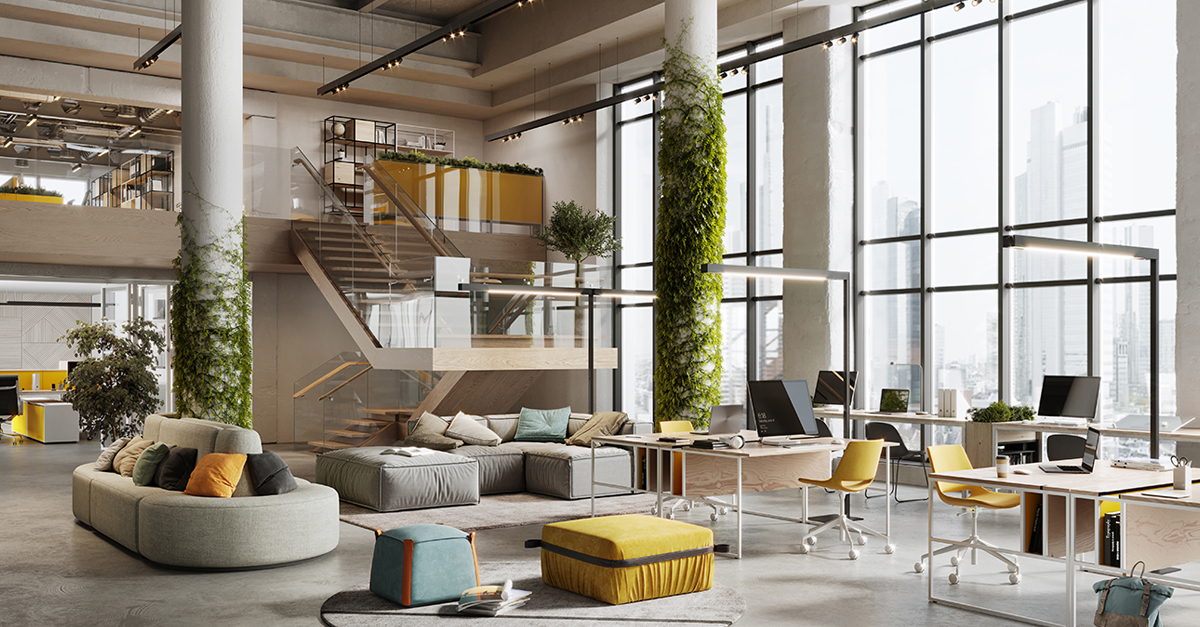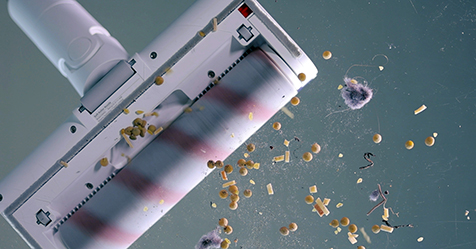Facility managers, builders, interior designers, and everyone in between can contribute to a practical and empowering workspace. Smart blueprints and furniture layouts are just a few of the aspects that foster a collaborative environment. Companies that design collaborative workspaces will facilitate what could be the most impactful year for any team.
1. Comfort and ergonomics
Collaborative working environments mean constant exposure to colleagues, regardless of their mood on any given day. Every aspect of the building has the potential to elevate comfort levels, increasing the chances that collaborations will be positive and well-intended.
For example, flooring professionals can install buoyant carpet or wood that supports employees who must stand for extended periods. Workers feel less exhausted and pained by rigid environments, fostering a better headspace for productive conversations. A case study explored how an ergonomic-inspired design adjustment in a call center eliminated daily complaints and reduced a 15% injury rate related to strained bodies.
Another aspect of comfort is ergonomics. Everything from computer mice to door handles must conform to natural positioning rather than just be there for aesthetic purposes. If your employees spend most of their time at a computer, consider installing comfortable desk chairs. Modular furniture is another way to combine functional design with flexibility, as it enables workers to adapt the environment according to their needs.
Comfort encompasses more than just furniture. It is important to explore how environmental metrics like acoustic quality and temperature impact employee creativity and teamwork abilities.
2. Biophilic design for wellness
Countless studies have proven how nature-inspired spaces create a sense of calmness and clarity. Being around diverse living things makes offices feel homier and less sterile. Increasing emotional and physical comfort is ideal for workspaces prioritizing teamwork and communication, as studies indicate that connecting with nature improves our sense of empathy and cognitive function.
Design collaborative workspaces by incorporating air-purifying plants to promote respiratory health. By reducing aggravating external factors in the building, healthy employees are less likely to argue and engage in conflicts.
3. Open floor plans and data privacy
Facility managers previously hired contractors to tear down walls, let in natural light, and craft vast, open spaces for improved communication and camaraderie. These ideas remain relevant today but building service professionals must find ways to allow for privacy options in an age of reduced trust. More projects come to fruition if both physical and digital collaborative spaces feel secure.
Cyberspaces are more vulnerable than ever. Dismissive attitudes toward automation and digital environmental maintenance translate into poor care over physical spaces. Employees in open-floor concepts should have access to built-in systems if they want to contribute while keeping resources discreet.
Building managers can work with their IT and cybersecurity teams to ensure that safe atmospheres in the physical space are reflected in the building’s tech and online coworking platforms.
4. Flexible and agile tech
In 2020, employers realized that there would be a permanent transition to hybrid working models. This trend has inspired workspaces to become more flexible and agile, as workers are constantly transitioning between home and office. Companies have installed everything from moveable walls to public conference spaces to adapt the environment to their evolving workforces. Everything must remain organized and intuitive, even amidst flux.
Flexibility refers to a space’s ability to support work-life balance and offer the choice to work from anywhere within an office. The style is a direct contrast to traditional, assigned cubicles that limit who people interact with. Buildings must support the easy sharing of diverse ideas in the most comfortable positions possible. The design should facilitate numerous desks, meeting areas, and seating options.
Some considerations include how easily staff can unplug and transport devices, and if such distractions detract from the team’s productivity. Does the hybrid environment support seamless videoconferencing, and is take-home tech convenient and not cumbersome?
Agility refers to a collaborative space that is adaptable. For example, a white wall seems inconspicuous, but it is ideal for serving as a pop-up projector or as a whiteboard for brainstorming. Agility also refers to how well the current tech stack and incoming tools integrate with existing resources. Tech integration and workforce mobility should feel more like freedom than disruption to promote lucrative collaborative efforts.
5. Don’t forget kitchens
Facilities continue to spark collaboration in areas where it is less obvious. Kitchens can include design elements that support inclusivity, accessibility, and communication. A kitchen is the perfect place for this. Most offices have a fridge and microwave with a few round tables, but why not personalize it?
If the crew is passionate about coffee, invest in a coffee station that generates quality conversation during breaks. If the staff demographics lean toward a particular style, reimagine the kitchen as a minimalist brunch restaurant or hipster craft beer bar with board games. Managers will be surprised how a familiar environment, focusing on individual values, can promote bonding.
The secret to why this works is that facility managers and builders can only foster the right atmosphere if they familiarize themselves with their staff. Collaborating with the whole team enables managers to understand them more empathetically. It sets a precedent for a sense of belonging in every room. About 94% of survey respondents said it’s important that their workplace is welcoming. Workers appreciate and acknowledge the attentiveness, leading to improved trust and company loyalty.
Take time to design collaborative workspaces
Fostering an environment that welcomes open communication and a friendly team spirit is more than an open floor plan. Architectural and design choices breathe life into a space from every angle, from the frosted windows to the standing desks on wheels.
Overlooking the most minute, seemingly unrelated details, like sparse outlets and outdated lightbulbs, can stymie technological adoption or reduce team productivity. Facility managers should utilize every square foot to design collaborative workspaces that enhance innovation.




